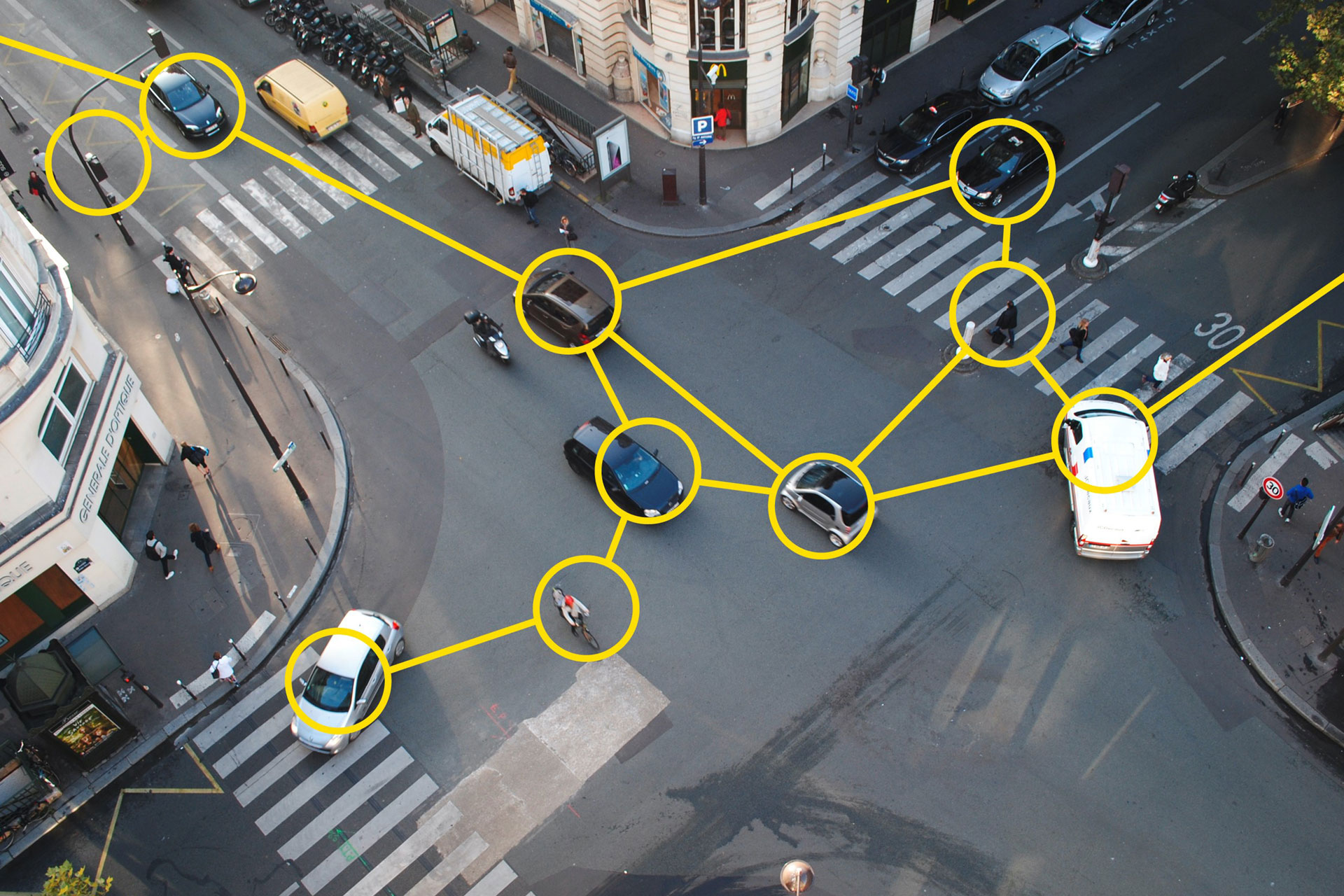The Orchestrated Connected Corridor is transforming road traffic – but what is it?

For highway and city authorities around the world, managing traffic congestion and keeping road users safe are major and constantly growing challenges.
According to the WHO, road traffic accidents claim nearly 1.3 million lives each year and are the biggest killer of five- to 29-year-olds globally. Additionally, despite some regions showing a slight downward trend in road accidents, the UN target to reduce road deaths and injuries by 50% by 2030 is currently out of reach without concentrated efforts.
This worrying development is pointing towards massive potential for improving traffic infrastructure and prioritizing safety and sustainability in mobility. One way to realize this potential is the use of modern technology, bringing mobility infrastructure up to speed with the demands of current and coming generations by connecting infrastructure, vehicles and traffic authorities.
To make roadways safer and greener, and to improve traffic flow, Orchestrated Connected Corridor (OCC) solutions are being tested and implemented in cities and on highways around the world. Combining in-vehicle sensors with advanced data collection and processing platforms at the network edge, and in the cloud, OCCs provide real-time traffic management capabilities and insights that support a range of innovative safety and traffic mobility use cases.
But what exactly is an OCC, which technologies does it incorporate, and how can this kind of solution be rolled out?
Looking under the hood at key OCC technologies
OCCs are built on a range of hardware and software technologies that provide end-to-end traffic solutions, including data collection, transmission, and processing. The leading OCC solutions provide modular concepts that allow the evolution of existing roadside infrastructure and technology stack in a seamless, efficient, and low-risk way.
OCCs must also be able to generate, process, and activate a wide range of data relating to vehicles (and their locations), traffic conditions, road conditions and more. This data is generated by a scope of devices and sensors, from in-car systems and OBUs, to roadside cameras with advanced machine learning and image processing capabilities.
Key components required for high-functioning OCC deployments include:
Data sources for real-time traffic insights
These typically include vehicle onboard units (OBUs), which communicate with roadside infrastructure sensors and infrastructure, such as cameras with AI capabilities for vehicle and VRU detection. Additional data sources for OCCs may include tolling data, floating car data, C-ITS data from paired traffic management systems, and mobile data from drivers’ phones or other devices.
Fast, reliable connectivity between C-ITS systems (vehicles and roadside infrastructure)
This is based on V2X technology (such as ITS-G5 or C-V2X) which supports latency-sensitive applications such as in-vehicle driver communications and warnings relating to road works, lane closures and so on.
Roadside infrastructure and sensors
OCC solutions should provide a roadmap that enables updates and optimization of existing estates of roadside infrastructure and devices. The leading roadside infrastructure solutions are now ‘intelligent’, using machine learning to distinguish between different types of vehicles, cyclists, pedestrians, and other objects in the roadway to support key safety applications and to enable the deployment of low-emissions zones, congestion charging schemes, and more.
Advanced data platforms
To enable OCCs to function, data generated by vehicle OBUs and roadside sensors (such as cameras, radar and LiDAR) needs to be stored and processed by an advanced data platform. The leading solutions of this type support real-time processing and analytics for critical safety use cases based on descriptive, diagnostic and predictive traffic data analytics. Advanced data platforms offer a wide range of insights, including detailed analysis of traffic on the OCC, travel time calculations, detection of incidents or anomalies, traffic predictions, and more.
Open integration with traffic management platforms
Data from OCC data platforms can be integrated seamlessly into traffic management systems, making visible the status of roadside units, dynamic message signs, AI cameras and all other connected devices, and the data generated by them. Traffic management platforms support a real-time view of traffic across the OCC, with a decision support system to enable faster responses to safety incidents or to initiate actions such as traffic re-routing or ‘green wave’ applications when needed to speed up traffic flow.
End-to-end consultancy and integration services
To successfully plan and deploy OCC solutions, consultancy and integration support from a trusted technology partner is paramount.
Streamlining deployments for optimal roadway ROI and efficiency
As a single point of contact and access for Connected Vehicle infrastructure, data and analytics platforms and services, Kapsch TrafficCom can help minimize deployment time and cost risks and accelerate time to benefit complex projects.
For greenfield rollouts, we can help select, deploy and integrate the most appropriate OCC solutions from the outset based on defined objectives. In the case of brownfield deployments, we can help to maximize the lifecycle and ROI of existing roadside infrastructure, including cameras and sensor fleets, by integrating them seamlessly into Kapsch’s data analytics and traffic management platforms and extending with connectivity to vehicles.
More information
If you want to find out more about what the Orchestrated Connected Corridor is and how it can make roads safer and more efficient, visit our dedicated OCC website or get access to our folder below.